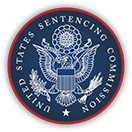
This collection of publicly available information and resources on supervised release includes governing statutes, relevant guidelines and policy statements, available research and data, and other background information.
Click to navigate to a section of the toolkit:
IMPORTANT NOTE
A guideline amendment to the supervised release policy statement will take effect November 1, 2025.
Learn more about these changes by clicking the Amendment-In-Brief icon below.
The Commission will update this page after the new amendment takes effect.
![]()
STATUTES AND GUIDELINES
The Sentencing Reform Act of 1984 (SRA) eliminated parole for federal crimes committed after November 1, 1987 and established supervised release, a form of post-imprisonment supervision. The primary statute governing supervised release is 18 U.S.C. § 3583; certain other statutes also include supervised release requirements. See, e.g., 21 U.S.C. §§ 841, 846, 960, 963.
In determining whether to impose a term of supervised release, the court is required under 18 U.S.C. § 3583(c) to consider, among other factors:
(i) the nature and circumstances of the offense and the history and characteristics of the defendant;
(ii) the need to afford adequate deterrence to criminal conduct, to protect the public from further crimes of the defendant, and to provide the defendant with needed educational or vocational training, medical care, or other correctional treatment in the most effective manner;
(iii) the need to avoid unwarranted sentence disparities among defendants with similar records who have been found guilty of similar conduct; and
(iv) the need to provide restitution to any victims of the offense.
The current Guidelines Manual addresses Congress's directives on supervised release in Chapters Five and Seven. Chapter Five, Part D covers the imposition decision itself (§5D1.1), the length of a term of supervised release (§5D1.2), and the conditions of supervised release (§5D1.3). Chapter Seven of the Guidelines Manual addresses violations of supervised release by means of an introductory framework and a series of policy statements.
In 28 U.S.C. § 994, Congress instructed the Commission to promulgate:
“guidelines . . . for use of a sentencing court in determining the sentence to be imposed in a criminal case, including [] . . . whether a sentence . . . should include a requirement that the defendant be placed on a term of supervised release after imprisonment, and, if so, the appropriate length of such a term;”
“general policy statements regarding application of . . . the conditions of probation and supervised release set forth in sections 3563(b) and 3583(d) of title 18;” and
“guidelines or general policy statements regarding the appropriate use of . . . the provisions for modification of the term or conditions of supervised release and revocation of supervised release set forth in section 3583(e) of title 18.
RESEARCH AND DATA
The Commission releases information on supervised release in its annual Sourcebook of Federal Sentencing Statistics.
Information from Table 18 of this publication is presented in the table below.
Or access the Commission's Quick Facts on Supervised Release.
LEGAL FRAMEWORK
Access the Commission's legal primer, eLearning course, or quick reference guides on supervised release below.
HISTORICAL BACKGROUND
Explore the Commission's amendment work in this area by viewing the table below.
Click an amendment number to review the specific language and reasons for the amendment.
ADDITIONAL RESOURCES
- Post-Conviction Supervision Policies, Administrative Office of the U.S. Courts
- National Standards for Community Supervision, American Probation and Parole Association
- Federal Post-Conviction Supervision Outcomes: Rearrests and Revocations, James L. Johnson, Probation and Pretrial Services Office, Administrative Office of the U.S. Courts

